North Korea test-launched new ‘Hwasong-17’ ICBM for first time, state media says . Longest-range nuclear weapon test since 2017 intended to ‘contain’ U.S. military threats, Pyongyang says
North Korean leader Kim Jong Un guided the successful test-launch of a new “powerful tool for nuclear attack” called the “Hwasong-17” intercontinental ballistic missile (ICBM) on Thursday as part of efforts to “contain” the U.S., state media reported the following day.
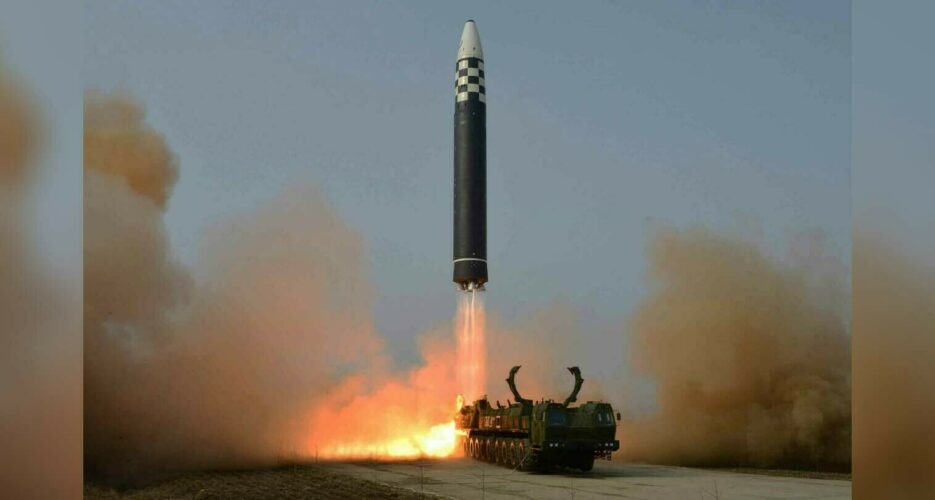
The “Hwasong-17” ICBM reportedly firing from its launch vehicle on March 24 | Image: Rodong Sinmun (March 25, 2022)
Pyongyang claimed it carried out the test to “ensure the scientific and technical reliability of [the Hwasong-17’s] prompt operation under the wartime condition,” as neighboring countries and the U.S. condemn the launch as a major provocation.
It is North Korea’s first full ICBM test since Nov. 2017, and is considered their largest nuclear-capable missile. It was first revealed at a military parade in Oct. 2020.
 Kim Jong Un appeared to watch the missile test with top military officials from an observation train car or bus | Images: Rodong Sinmun (March 25, 2022)
Kim Jong Un appeared to watch the missile test with top military officials from an observation train car or bus | Images: Rodong Sinmun (March 25, 2022)
“It is necessary to make clear that whoever tries to infringe upon the security of our state shall pay dearly,” Kim reportedly said while overseeing the launch, according to the Rodong Sinmun.
“Our state defence capability will make thorough preparations for long confrontation with U.S. imperialism on the basis of the tremendous military technical force unflinching even to any military threat and blackmail.”
He added that the “Strategic Force of the DPRK is fully ready to thoroughly check and contain any dangerous military attempt of the U.S. imperialists,” and that “the new strategic weapon of the DPRK will clearly show the might of our strategic force to the whole world once again.”
Friday’s state media report was not clear about whether the missile system is ready for deployment, but said the Strategic Forces will “equip and operate” the Hwasong-17 to “reliably perform its mission and duty as a powerful nuclear war deterrent.”
South Korea’s Joint Chiefs of Staff (JCS) on Thursday said the missile flew 671 miles (1,080 km) and reached an altitude of 3,853 miles (6,200 km).
Japan’s defense ministry said the flight time was around 71 minutes, and that the missile splashed down 93 miles (150 km) west off the coast of Toshima Peninsula in Hokkaido, within Japan’s Exclusive Economic Zone (EEZ).
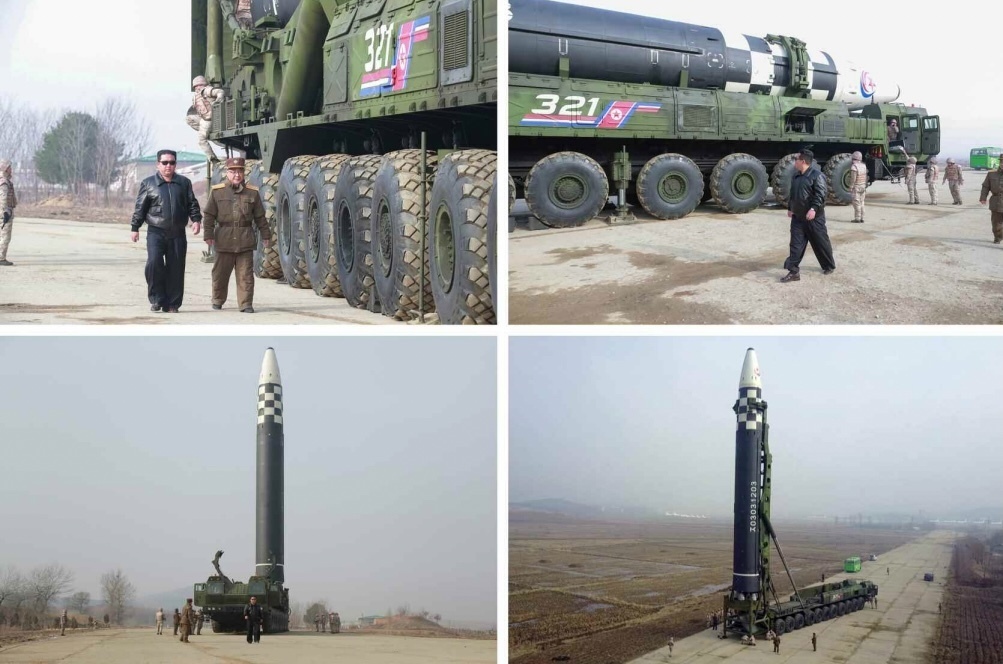
The ICBM was fired from its 11-axle transporter erector launcher (TEL) or launch vehicle at the Pyongyang International Airport | Images: Rodong Sinmun (March 25, 2022)
 The missile was launched from a patch of road between the Pyongyang International Airport in Sunan and the so-called “Sil-li” suspected missile-related facility (coordinates: 39.188124°, 125.666442°) | Images: Google Earth (left), Rodong Sinmun (right, March 25, 2022), edited by NK News
The missile was launched from a patch of road between the Pyongyang International Airport in Sunan and the so-called “Sil-li” suspected missile-related facility (coordinates: 39.188124°, 125.666442°) | Images: Google Earth (left), Rodong Sinmun (right, March 25, 2022), edited by NK News
North Korea provided similar numbers in its report on Friday, saying it flew for 67 minutes, reached an altitude of 3,882.3 miles (6,248.5 km) and landed 677 miles (1,090 km) from its launch location at the Pyongyang International Airport.
Friday’s report did not detail the missile’s intended maximum range, but it is larger than the “Hwasong-15” ICBM which state media said in 2017 was designed specifically to strike the “entire” U.S. mainland.
“The intercontinental ballistic missile was test-fired vertically in consideration of the security of the neighbouring states,” North Korea said Friday, despite Japanese anger at the missile landing in its waters.
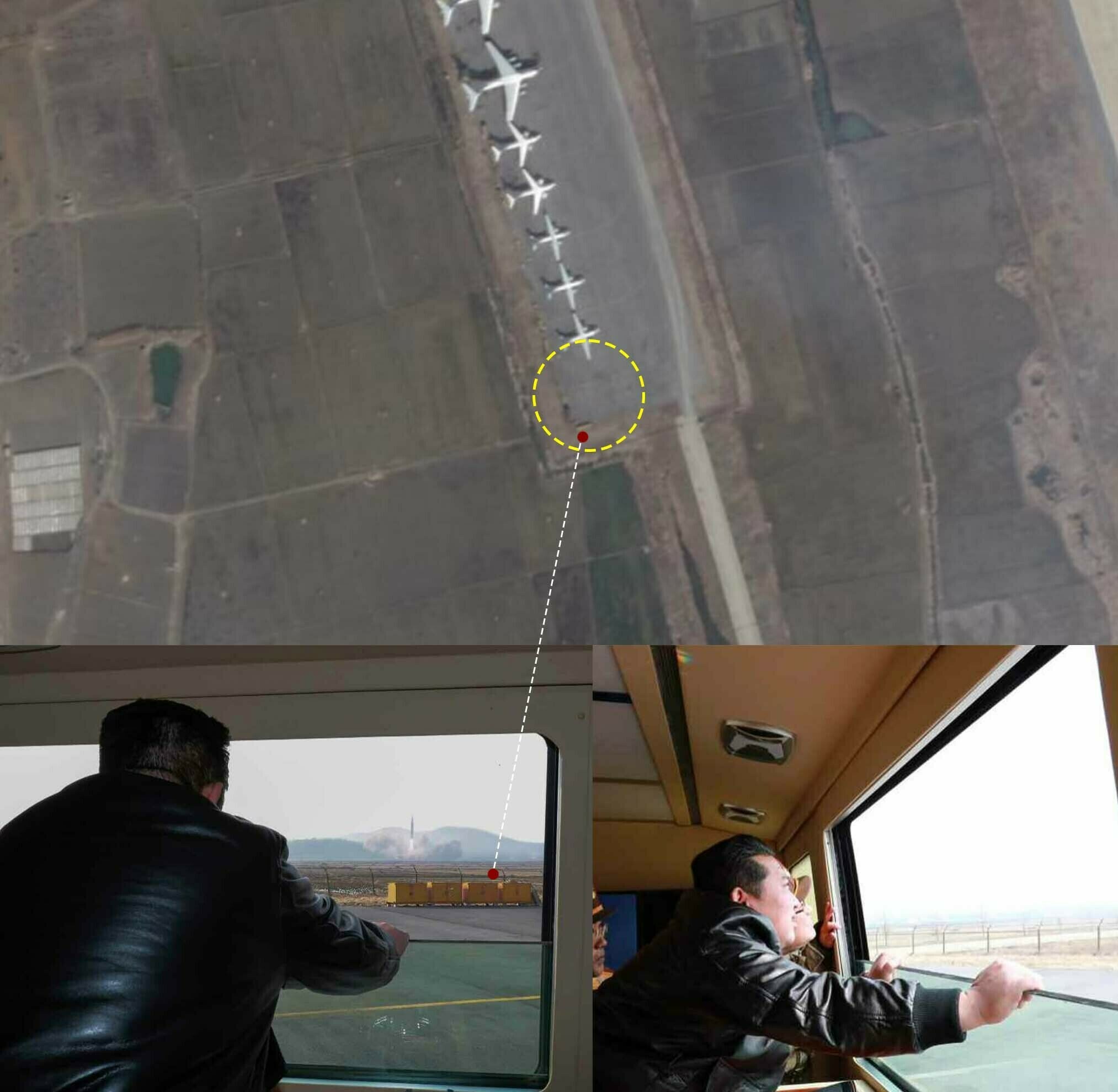 Kim Jong Un appeared to watch the launch from a custom observation bus parked at the Pyongyang International Airport (coordinates: 39.197375°, 125.668951°). Yellow bins appearing outside the window as Kim watched were visible in a March 22-dated satellite image of the location. He used the same bus to watch a “hypersonic” missile test in Jan. 2022. | Images: Planet Labs (top, March 22, 2022), Rodong Sinmun (March 25, 2022), edited by NK News
Kim Jong Un appeared to watch the launch from a custom observation bus parked at the Pyongyang International Airport (coordinates: 39.197375°, 125.668951°). Yellow bins appearing outside the window as Kim watched were visible in a March 22-dated satellite image of the location. He used the same bus to watch a “hypersonic” missile test in Jan. 2022. | Images: Planet Labs (top, March 22, 2022), Rodong Sinmun (March 25, 2022), edited by NK News
Reactions from the international community have been swift and harsher than Pyongyang’s previous 10 missile tests this year.
South Korean President Moon Jae-in “strongly condemned” the launch as a “grave threat,” and the Japanese foreign minister and the U.S. Secretary of State called it a “clear and serious challenge” to the world.
The White House called the missile launch a “brazen violation” of multiple U.N. Security Council resolutions banning North Korea from testing ballistic missiles – resolutions which Pyongyang does not recognize as legitimate.
The Biden administration called on Pyongyang to “immediately cease its destabilizing actions,” but added that “the door has not closed on diplomacy.”
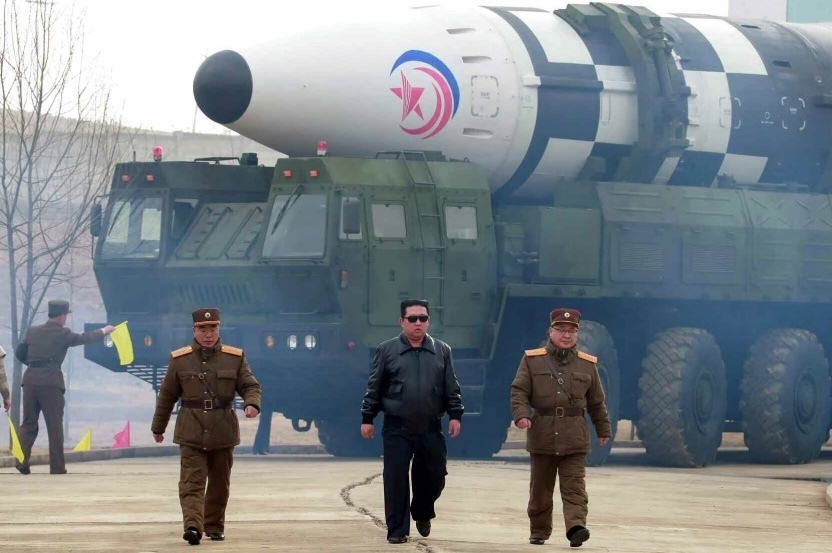 Kim Jong Un flanked by top military officials overseeing the country’s nuclear weapons program Jang Chang Ha (left) and Kim Jong Sik (right) as the TEL appeared to exit the “Sil-li” missile facilities nearby the airport. | Image: Rodong Sinmun (March 25, 2022)
Kim Jong Un flanked by top military officials overseeing the country’s nuclear weapons program Jang Chang Ha (left) and Kim Jong Sik (right) as the TEL appeared to exit the “Sil-li” missile facilities nearby the airport. | Image: Rodong Sinmun (March 25, 2022)
China, who condemned North Korea’s last ICBM launch in Nov. 2017, did not offer its own assessment of the latest test on Thursday, with the foreign ministry calling for “peace and stability” on the Korean Peninsula.
Kim Jong Un declared a moratorium on testing nuclear weapons and ICBMs in 2018 as relations warmed with the U.S. and South Korea, but he appeared to rescind it this past January by instructing officials to “rapidly examine the issue on resuming” such testing.
He said in Friday’s missile test report that North Korea will “concentrate all efforts of the state on continuously strengthening defense capabilities.”
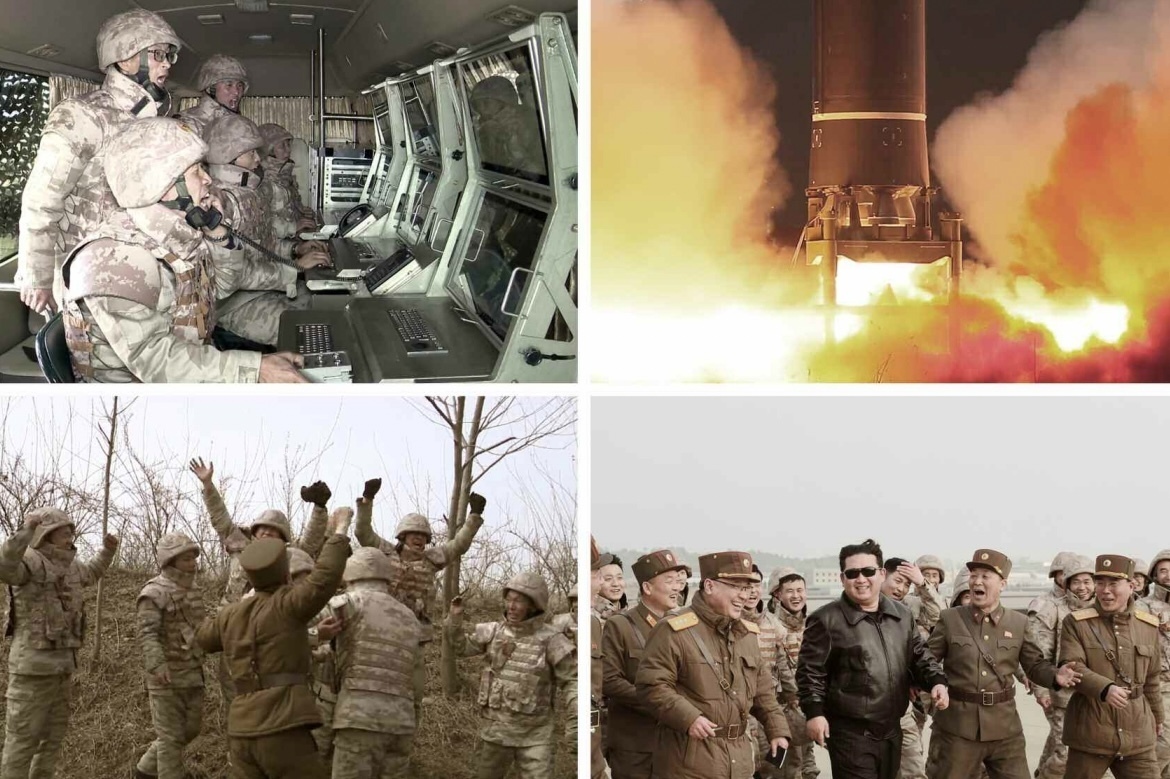 The launch order appeared to be given from a military command bus or van | Images: Rodong Sinmun (March 25, 2022)
The launch order appeared to be given from a military command bus or van | Images: Rodong Sinmun (March 25, 2022)
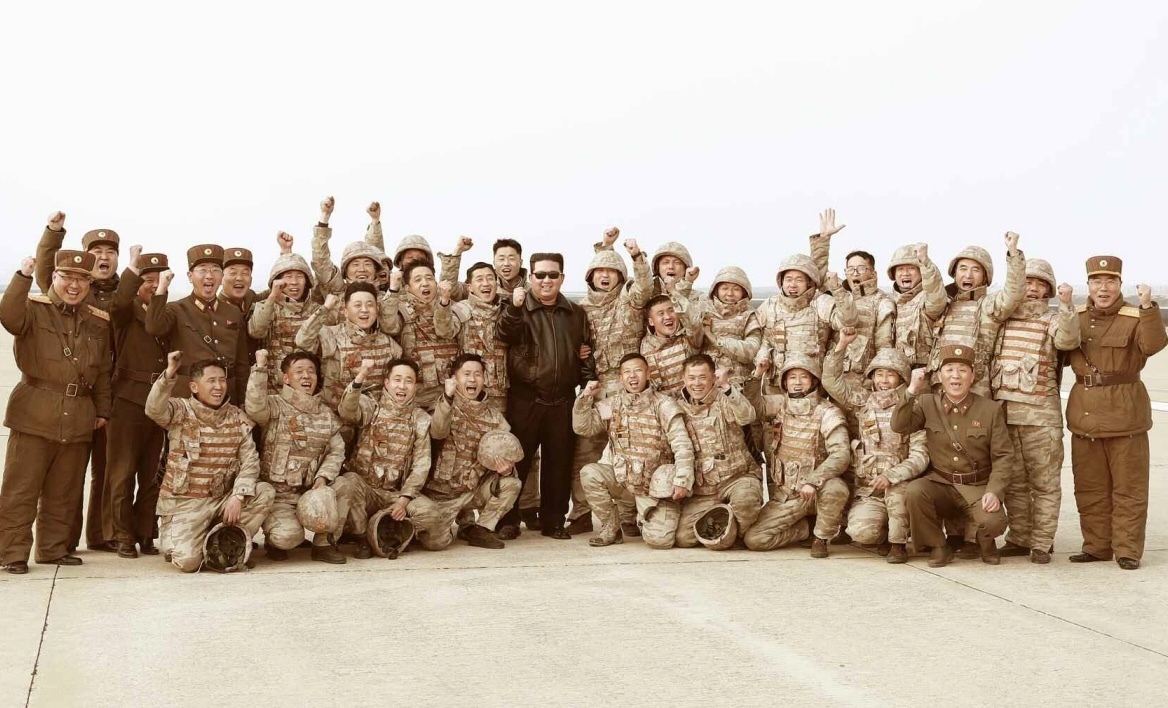

Edited by Arius Derr
Source:nknews.org